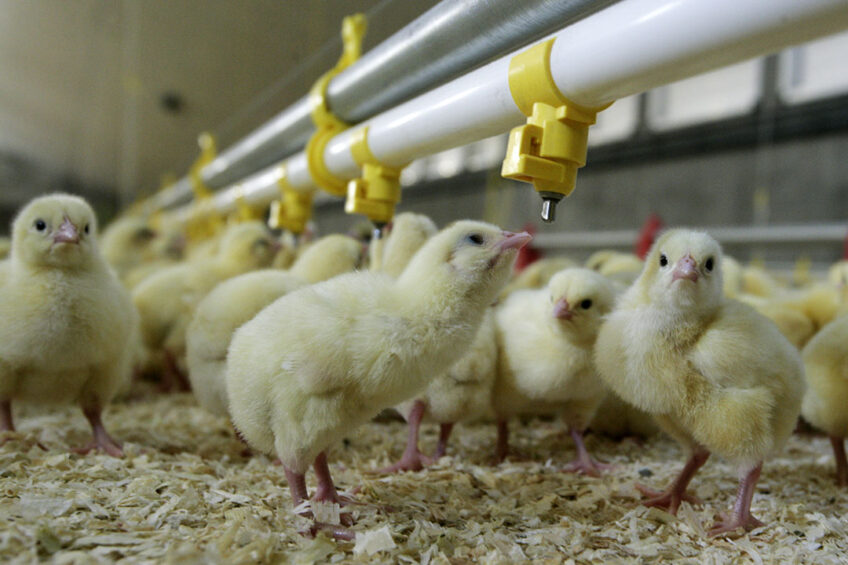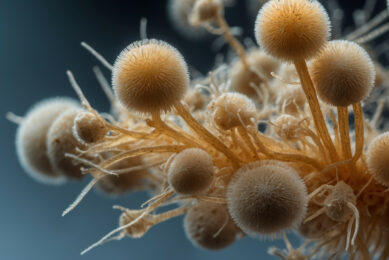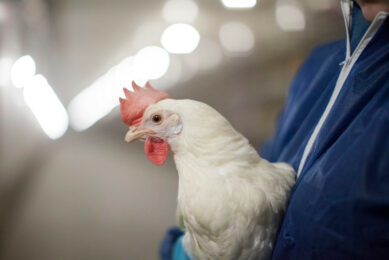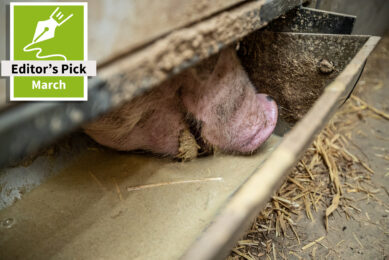8 factors to consider in water supply for poultry

Water plays a vital role in all body processes and is the main constituent of blood, lymph, mucus, and digestive flows. Poultry producers should, therefore, have reasonable assurance that an adequate supply of good quality water is provided, with the factors affecting proper water intake and utilisation to be duly considered.
 Water intake
Water intake
Feed and water consumption are very closely correlated. The birds will drink little water if they do not have access to feed and will eat little or no feed if they do not have access to water.
Poultry consuming high-energy feeds require less water than those receiving low-energy diets. This is due primarily, to the differences in the amounts of water formed in the body per gram of nutrient metabolised. It is estimated that the amount of water released is 1.70 and 0.56/g of fat and starch oxidised in the body, respectively.
The type of protein used in feed formulation can have a significant effect on water consumption. Protein sources such as soybean and meat-and-bone meals tend to increase water consumption compared to other protein sources. Diets high in fibre also increase water consumption. Since more faeces are produced on high-fibre diets, the bird will require more water in faecal production.
 Water and feed efficiency
Water and feed efficiency
A new system of providing oxygenated water to poultry was developed by H20 Technologies in the USA. The addition of oxygen to water helped increase metabolic rates in broilers, resulting in a 32% increase in feed efficiency and a 12% reduction in feed cost. These results are certainly promising to most poultry enterprises aiming at achieving target slaughter weights in shorter periods.
 Supplementation of water under high stocking density
Supplementation of water under high stocking density
High stocking density leads to negative effects in terms of growth performance and nutrient digestibility and decreases the cecum-beneficial bacteria in the chickens. To counter the effects, supplementing organic acids through drinking water (a mixture of 32% formic acid, 7% acetic acid, 20% ammonium format, and copper acetate) was found to improve the growth of birds by 4.4% and FCR by 4% at high stocking density, which is supported by the reduced pH in the upper digestive tract, increased enzyme activities in the duodenum and increased nutrient digestibility.
It was also shown that supplemental organic acids can improve resistance to coccidium and Salmonella Pullorum, suggesting a role for organic acids in improving the immune status of the bird under high stocking density.
 Water and medication
Water and medication
When attempting to arrive at better disease control in chickens, it is preferable to add medication to drinking water rather than mixing them in the feed. This helps ensure fast and easy medication and also ensures an adequate consumption of the drug. Diseased birds usually tend to stop eating while in most cases they continue to drink water. The consumption of water by birds may, however, vary according to the moisture content of the feed. This point is of particular importance when certain medicinal products are added to the drinking water. With high-moisture feed, the amount of medicine may be reduced to below the desired level. In this case, the medical doses should be adjusted accordingly for better therapeutic effect.
 Salinity and water source
Salinity and water source
Too much salt in the drinking water (sodium chloride or sodium sulphate) is more damaging than excess in the diet. Saline water often leads to various health and production problems such as weakness, gasping respiration, water accumulation in the large serous cavities of the body of broiler chickens, and delayed onset of egg production in laying hens. It is, therefore, recommended that 2,860 mg/litre is the upper safe limit for salts in drinking waters for poultry. This may be a point of particular importance in areas where artesian wells are used as a source of pure water for poultry farms. In these wells, water was found to be pure at a depth of 50-60 meters but at greater depth, water tends to be saline. Although such relationships may vary from one part of the world to another, depending on geological factors, the depth of wells used in the poultry industry should be one factor to consider when attempting to obtain clean and safe water.
 Water drinking system
Water drinking system
Field observations found that broilers provided with nipple drinkers had an improved feed conversion, with less mortality and condemnations compared to broilers given water in troughs. Furthermore, nipple drinkers require less labour for cleaning and disinfection than other water supply systems. Nipple drinkers, being enclosed, provide a highly sanitary source of water and hence prevent many disease problems that are associated with the use of other drinker types.
The downside of nipple drinking systems:
Despite the above-mentioned advantages of nipple watering systems, they have some disadvantages.
- the initial cost of this system can be 30% more than conventional open systems
- repair and maintenance of broken or worn parts are also more expensive.
- the nipple mechanism will not last forever and will have to be replaced.
- the management of these systems is more difficult than open systems and poor management will almost always result in serious and costly production losses.
These drawbacks should, therefore, be balanced against the advantages before the decision is made to use nipple drinkers, even on farms with the financial and technical capacity to use them.
 Water and lighting schedule
Water and lighting schedule
Either natural or artificial light can affect water intake. With natural lighting, 2 peaks in water consumption usually occur:
- At dawn, as the sun comes up and the birds become active
- At dusk, as light levels begin to fade and the birds increase their intake just before ‘bedding down at night’
Artificial lighting – caution when changing schedule
With artificial lighting, much the same pattern can be observed. Water intake increases when the lights first come on and increases again just before the lights go off. The birds ‘learn’ what time the lights go off, and increase consumption just before this ‘bedding down’ time. Therefore, whenever a change is made to the lighting schedule, always the ‘on’ time, not the ‘off’ time should be changed, so as not to disrupt the intake pattern the birds have established at ‘bedtime’.
 Hot versus cold water
Hot versus cold water
Drinking water temperatures should be between 10°C to 15°C for the most comfortable consumption by mature birds, but some studies have indicated that water temperatures of about 25°C reduce mortality in chicks. Temperatures over 30°C will reduce consumption and birds will refuse to drink if water temperatures are over 44°C. With cold water (8°C), the effects of heat stress were alleviated and the birds were able to gain more weight and had higher feed efficiency. Birds were also more responsive to vitamin C supplementation (500 mg per litre of water) when offered cold water, as they had better survival and higher carcass quality, with special reference to the breast meat yield.
References are available from the author upon request.
The All About Feed Newsletter
Sign up for our newsletter and receive all our need-to-know content three times a week.











